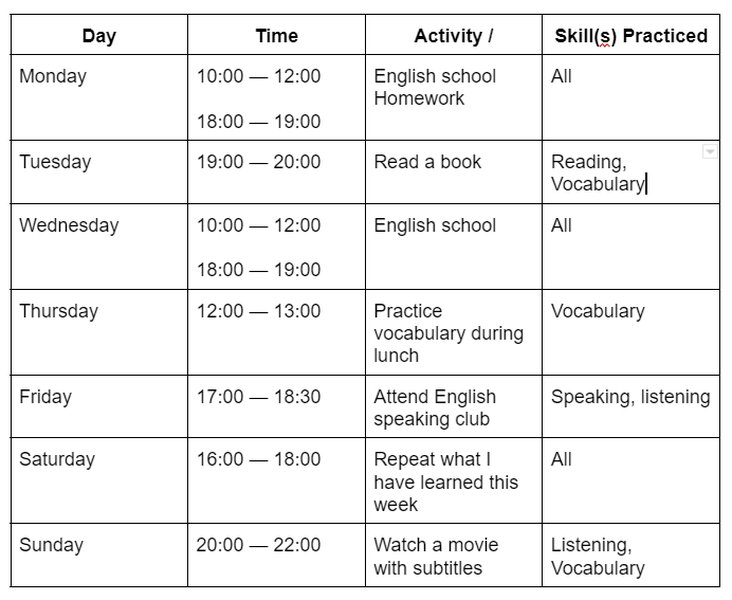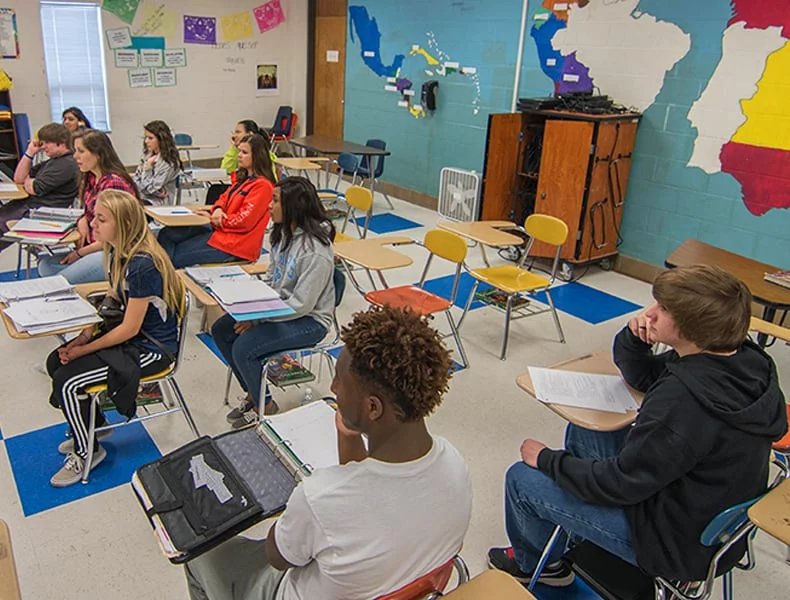
Unlock a New Language Rapidly: Proven Strategies for Accelerated Fluency
Discover the most effective techniques, from immersive practices to smart tool utilization, for mastering a language faster than you thought possible.
Key Insights for Rapid Language Acquisition
- Immersive Exposure: Constant contact with the target language through daily activities, media consumption, and ideally, conversation is the cornerstone of fast learning.
- Active & Consistent Practice: Regular, focused sessions, especially involving speaking from day one, yield far better results than sporadic, lengthy studies.
- Strategic Resource Utilization: Leveraging high-frequency vocabulary, spaced repetition systems (SRS), language learning apps, and personalized tutoring can significantly cut down learning time.
The Pillars of Accelerated Language Learning
Learning a new language is an enriching endeavor, and while there's no single "magic bullet," a combination of proven strategies can dramatically accelerate your journey to fluency. The core principle revolves around maximizing exposure and active engagement with the language in meaningful ways.
Embrace Total Immersion: Your Linguistic Ecosystem
Immersion is consistently cited as the most powerful catalyst for rapid language acquisition. This doesn't necessarily mean relocating to another country; you can create a rich immersive environment wherever you are.

Creating an engaging learning environment is key.
Crafting Your Immersion Bubble:
- Digital Immersion: Change the language settings on your phone, computer, and social media accounts to the target language.
- Media Consumption: Watch movies, TV series, and news broadcasts in the target language. Start with subtitles in your native language if needed, then switch to target language subtitles, and eventually aim for no subtitles. Listen to music, podcasts, and audiobooks.
- Real-life Integration: Label items around your home in the target language. Try to think and even narrate your daily activities internally in the new language.
- Community Engagement: If possible, find local communities or online groups of speakers of the target language.
The goal of immersion is to make the language an integral part of your daily life, forcing your brain to adapt and learn contextually, much like how we acquire our native tongue.
The Power of Consistent and Active Practice
Consistency trumps intensity when it comes to long-term retention and skill development. Short, regular study sessions are more effective than infrequent marathon sessions.
Making Practice Productive:
- Daily Habits: Aim for at least 30-60 minutes of focused language practice each day. This could be broken into smaller "microlearning" chunks.
- Speak from Day One: Don't wait until you feel "ready." Start speaking from the very beginning, even if it's just simple phrases or talking to yourself. Mistakes are part of the learning process.
- Active Recall and Application: Instead of passively reviewing material, actively try to recall words and construct sentences. Use the language to communicate, whether writing a short journal entry or conversing with a partner.
- Shadowing: Listen to native audio and try to repeat it as closely and quickly as possible. This technique helps improve pronunciation, intonation, and rhythm.
Strategic Learning: Working Smarter, Not Just Harder
Efficient learning involves prioritizing high-impact activities and using techniques that align with how our brains learn best.

A well-structured study plan can guide your learning journey.
Key Strategic Elements:
- High-Frequency Vocabulary: Focus on learning the most common words and phrases first. Mastering the top 1,000-2,000 words can allow you to understand a significant portion of everyday conversation.
- Spaced Repetition Systems (SRS): Use tools like Anki or Memrise, which employ algorithms to schedule reviews of vocabulary and grammar points at optimal intervals, just before you're likely to forget them. This dramatically improves long-term retention.
- Comprehensible Input: Engage with material that is slightly above your current proficiency level. This "i+1" concept, popularized by linguist Stephen Krashen, suggests that we acquire language when we understand messages that contain structures we haven't yet fully acquired.
- Pronunciation Focus: Pay attention to pronunciation from the outset. It's easier to form good habits early than to correct ingrained errors later. Listen carefully to native speakers and mimic their sounds.
- Learn One Language at a Time: If speed is your primary goal for a specific language, focusing your efforts on one language will generally yield faster results than trying to learn multiple languages simultaneously.
Tools and Resources to Supercharge Your Learning
A variety of tools and resources can complement your learning strategies, providing structure, feedback, and opportunities for practice.
Leveraging Technology: Language Learning Apps
Language learning apps offer interactive lessons, gamification, and progress tracking, making them valuable supplements to your studies.
- Duolingo: Great for beginners, offering a science-based approach covering speaking, reading, listening, and writing in short, game-like lessons.
- Babbel: Focuses on practical conversation skills and grammar, often praised for its structured content tailored to real-world scenarios.
- Memrise: Utilizes SRS and video clips of native speakers to help with vocabulary acquisition and authentic pronunciation.
- Anki: A powerful, customizable flashcard program ideal for SRS-based vocabulary and phrase memorization.
While apps are useful, they are generally most effective when combined with other methods, especially direct communication practice.
The Human Element: Tutors and Language Exchange Partners
Interacting with native speakers or proficient learners is invaluable for developing conversational fluency and receiving personalized feedback.
- One-on-One Tutoring: Platforms like italki or Preply connect learners with tutors for personalized lessons. A tutor can tailor sessions to your specific needs, correct mistakes, and provide focused conversation practice. This is often considered one of the fastest routes to fluency.
- Language Exchange Partners: Find a partner who is a native speaker of your target language and wants to learn your native language. You can then help each other practice.
Real conversations, even if initially awkward, push your brain to actively use the language, improving recall, pronunciation, and sentence construction under pressure.
Intensive Programs and Structured Courses
For those who can dedicate significant time, intensive language courses offer a structured and accelerated path. These programs often involve several hours of instruction and practice daily, combining lessons, exercises, and immersion activities.
Comparing Language Learning Accelerators
Different methods for accelerating language learning offer unique benefits and suit different needs. The table below provides a comparative overview of some popular approaches, highlighting their characteristics to help you decide which might fit best into your learning strategy.
| Method | Description | Estimated Time Commitment (Daily) | Key Benefit | Potential Drawback |
|---|---|---|---|---|
| Full Immersion (Living Abroad) | Surrounding oneself completely with the target language and culture by residing in a country where it's spoken. | Constant (24/7 exposure) | Fastest natural acquisition, cultural understanding. | High cost, logistical challenges, potential culture shock. |
| Online Tutoring (1-on-1) | Personalized lessons with a native or proficient speaker via video call. | 30 mins - 2 hours | Tailored feedback, focused speaking practice, flexibility. | Can be costly over time, requires self-discipline for homework. |
| Language Learning Apps (e.g., Duolingo, Babbel) | Interactive, often gamified lessons for vocabulary, grammar, and basic phrases. | 15 mins - 1 hour | Accessibility, convenience, motivation through progress tracking. | May not sufficiently develop conversational fluency alone. |
| Spaced Repetition Systems (SRS - e.g., Anki) | Flashcard-based systems optimizing memorization by scheduling reviews. | 15 - 45 mins | Highly efficient vocabulary and fact retention. | Can be dry if not combined with engaging content; requires discipline. |
| Intensive Language Courses | Structured, fast-paced programs with several hours of daily instruction and practice. | 3 - 6 hours | Rapid progress through comprehensive curriculum and guided practice. | Significant time commitment, can be expensive, may be overwhelming for some. |
| Self-Created Immersion Environment | Actively incorporating the target language into daily life through media, device settings, and thinking in the language. | Variable, integrated into daily routine | Cost-effective, adaptable to personal interests. | Requires strong motivation and self-direction; lacks external accountability. |
Remember, the most effective approach often involves combining several of these methods to create a balanced and engaging learning experience.
Visualizing Language Learning Effectiveness
To better understand how different language learning strategies contribute to overall progress, consider the following radar chart. It provides a subjective comparison across several dimensions, such as speed of progress, cost-effectiveness, and development of speaking skills. This is an opinion-based visualization to illustrate general tendencies, not hard data.
This chart illustrates that while full immersion might offer the highest speed and speaking skill development, it's less cost-effective and accessible than language apps or SRS. A balanced approach, perhaps combining online tutoring with apps and self-study, might offer a good compromise for many learners.
Mapping Your Path to Language Proficiency
The journey to learn a language quickly is multifaceted, involving various interconnected strategies. This mindmap outlines the key components and their relationships, providing a holistic view of what an effective language learning system entails.
This mindmap illustrates that rapid language acquisition isn't about a single trick, but rather a synergistic approach combining core principles like immersion and consistent practice with the right tools, resources, and a resilient mindset. Each element supports and enhances the others, leading to more efficient and effective learning.
Expert Insights: Learning Languages Effectively
Many polyglots and language experts share their insights on how to learn languages quickly and effectively. The video below features Xiaomanyc, a popular polyglot, discussing his theories and approaches to rapid language learning. His experiences often highlight the importance of active speaking practice and immersion from the very beginning.
In this video, "The Fastest Way To Learn A New Language: The XiaoMaNYC Theory," the speaker emphasizes practical application and overcoming the fear of making mistakes. Key takeaways often revolve around maximizing exposure, engaging in real conversations as soon as possible, and tailoring learning methods to personal interests and goals. This aligns with the consensus that active use of the language in authentic contexts is paramount for rapid development.
Maintaining Momentum: Mindset and Goals
Your attitude and objectives play a significant role in your learning speed and sustainability.
Setting Clear Objectives and Staying Motivated
Understand why you want to learn the language. Is it for travel, career, personal enrichment, or connecting with family? Having a clear purpose will fuel your motivation during challenging times. Set SMART (Specific, Measurable, Achievable, Relevant, Time-bound) goals, such as "I will learn 100 basic vocabulary words this week" or "I will be able to hold a 5-minute basic conversation in three months."
Embracing Ambiguity and Mistakes
Accept that you won't understand everything at first, and that's okay. Language learning involves a degree of ambiguity. Similarly, making mistakes is an essential part of the process. View them as learning opportunities rather than failures. The more you speak and write, the more feedback you can get to improve.

Engaging activities and a positive mindset are crucial for sustained learning.
Frequently Asked Questions (FAQ)
Recommended Next Steps
To delve deeper into effective language learning, consider exploring these related queries:
- What are the best spaced repetition system (SRS) techniques for vocabulary acquisition?
- How can I create an effective language immersion environment at home?
- What are the pros and cons of learning a language with a tutor versus self-study?
- How do I find reliable language exchange partners online?
References
Last updated May 6, 2025